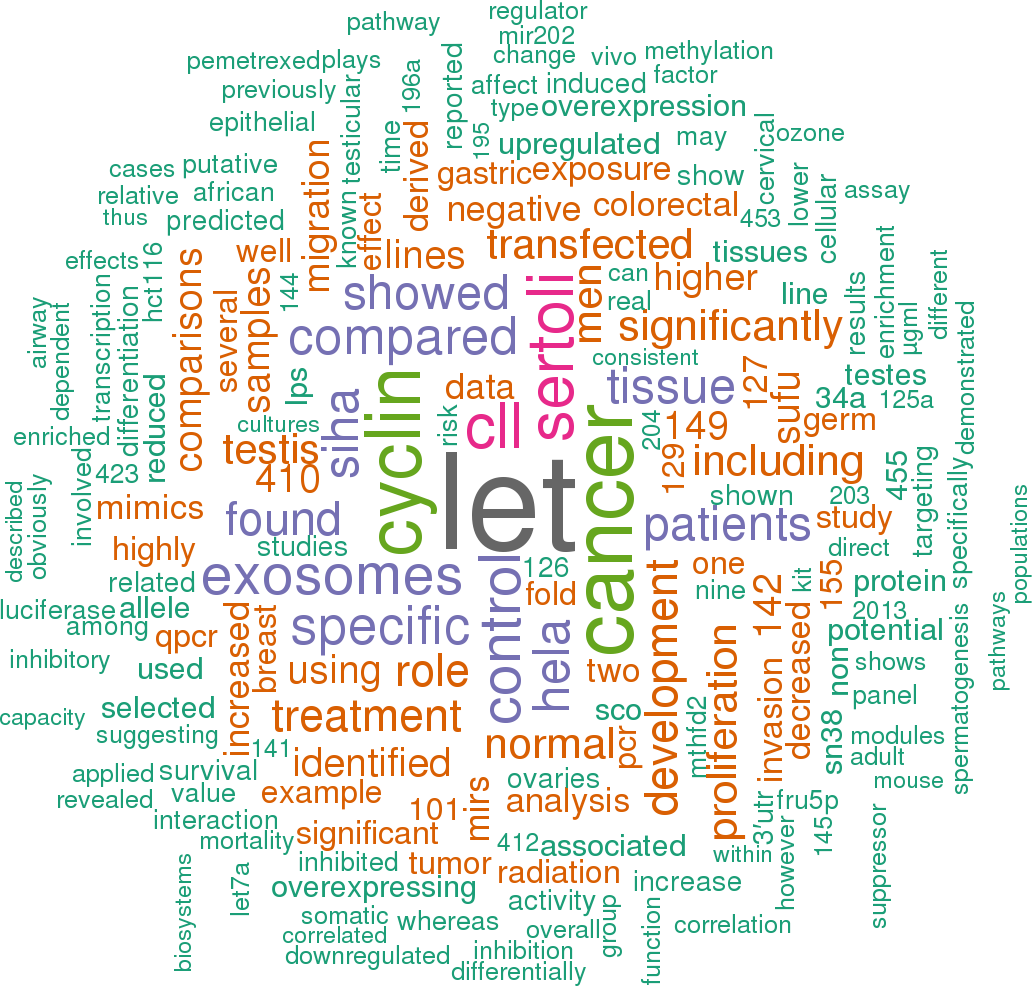Accession
MI0003130
Symbol
HGNC:
MIR202
Description
Homo sapiens
hsa-mir-202 precursor miRNA mir-202
Gene
family?
family?
RF00705;
mir-202
Summary
Caution, this is an AI generated summary based on literature. This may have errors. ?
MIR202 is a microRNA implicated in various biological processes and diseases, including breast cancer (BC), where it has been proposed as a biomarker in multiple independent clinical studies [PMC9967215]. It is located at the end of the chromosome in eutherian genomes, with its gene order conserved across different species, although with some variations [PMC3706607]. In knockout (KO) and knock-in (KI) mouse models, MIR202 has been observed to decrease in abundance [PMC10001410]], suggesting its involvement in gene regulation under these conditions. MIR202 has also been associated with polymorphisms in B-cell acute lymphoblastic leukemia patients [PMC7421781] and is notably duplicated at chromosome 10q26 alongside other genes [PMC4147387]. It has been identified as a potential regulator of genes related to aging and angiogenesis, such as HAS2 [PMC4168028], and its expression is notably increased alongside its host gene in non-obstructive azoospermia (NOA) cases of spermatogonial arrest [PMC8800634]. Furthermore, MIR202 expression influences the incorporation of tumor-suppressive miRNAs into exosomes within the ceramide pathway [PMC8722109], highlighting its role in intercellular communication. In esophageal cancer cell lines, overexpression of MIR202 significantly affects autophagy-related processes [PMC5302951], indicating its potential role in cancer biology.
Literature search

64 open access papers mention hsa-mir-202
(285 sentences)
(285 sentences)
Sequence
30687
reads,
235
reads per million, 89 experiments
cgccucagagccgcccgccguuccuuuUUCCUAUGCAUAUACUUCUUUGaggaucuggccuaaAGAGGUAUAGGGCAUGGGAAaacggggcggucggguccuccccagcg
(((....(((..((((((((((((.(((((((((((.(((((((((((.(((......))))))))))))))..))))))))))).))))))).))))).)))....)))
(((....(((..((((((((((((.(((((((((((.(((((((((((.(((......))))))))))))))..))))))))))).))))))).))))).)))....)))
Structure
cuca cc - u -A G au cgc gag gcccg ccguucc uuUUCCUAUGC UAUACUUCUUU agg c ||| ||| ||||| ||||||| ||||||||||| ||||||||||| ||| gcg cuc ugggc ggcgggg aaAAGGGUACG AUAUGGAGAaa ucc u accc -c u c GG - gg
Annotation confidence
High
Do you think this miRNA is real?
Comments
The mature sequence shown here represents the most commonly cloned form from large-scale cloning studies [2].
Genome context
chr10: 133247511-133247620 [-]
Disease association
hsa-mir-202 is associated with one or more human diseases in the Human microRNA Disease Database
| Disease | Description | Category | PubMed ID |
|---|
Mature hsa-miR-202-5p
| Accession | MIMAT0002810 |
| Description | Homo sapiens hsa-miR-202-5p mature miRNA |
| Sequence | 28 - UUCCUAUGCAUAUACUUCUUUG - 49 |
| Evidence |
experimental
array-cloned [1], cloned [2] |
| Database links |



|
| Predicted targets |



|
Mature hsa-miR-202-3p
| Accession | MIMAT0002811 |
| Description | Homo sapiens hsa-miR-202-3p mature miRNA |
| Sequence | 64 - AGAGGUAUAGGGCAUGGGAA - 83 |
| Evidence |
experimental
cloned [2] |
| Database links |



|
| Predicted targets |



|
References
|



